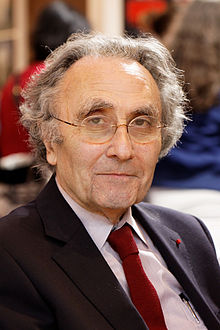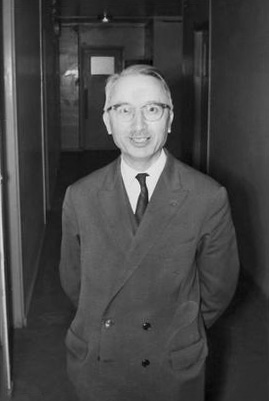
Henri Paul Cartan was a French mathematician who made substantial contributions to algebraic topology.
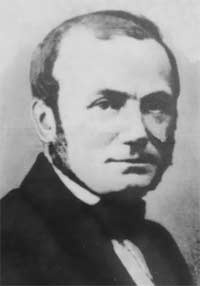
Isidore Geoffroy Saint-Hilaire was a French zoologist and an authority on deviation from normal structure. In 1854 he coined the term éthologie (ethology).
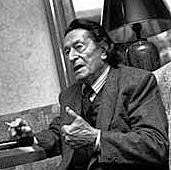
Henri Laborit was a French surgeon, neurobiologist, writer and philosopher. In 1952, Laborit was instrumental in the development of the drug chlorpromazine, published his findings, and convinced three psychiatrists to test it on a patient, resulting in great success. Laborit was recognized for his work, but as a surgeon searching for an anesthetic, he came to be at odds with psychiatrists who made their own discoveries and competing claims.
Pierre-André Taguieff is a French philosopher who has specialised in the study of racism and antisemitism. He is the director of research at the French National Centre for Scientific Research in an Institut d'études politiques de Paris laboratory, the Centre for Political Research (CEVIPOF). He is also a member of the Cercle de l'Oratoire think tank.

Bernard Miège is a French media theorist and academic administrator. He is Emeritus Professor of Communication and Information Science at Stendhal University in Grenoble. He was educated at Paris University, both in political studies and in economics. He has a Ph.D. in economics (Paris) and another Ph.D. in humanities (Bordeaux). He is the author of fifteen works in the following fields: the cultural industries, the introduction of the technologies of information and communication in the society and in the organisations, and the analysis of the theories of communication.
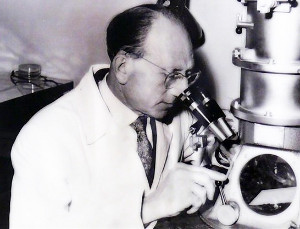
Pierre-Paul Grassé was a French zoologist, writer of over 300 publications including the influential 52-volume Traité de Zoologie. He was an expert on termites who rejected Neo-Darwinism and was a proponent of Neo-Lamarckism.

Liliane Aimée Ackermann was a French microbiologist, Jewish Community pioneer, leader, writer, and lecturer.
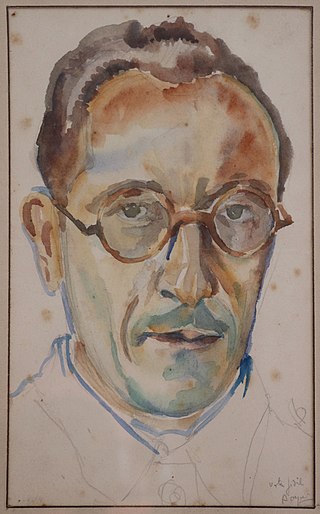
Raymond Ruyer was a French philosopher in the late 20th century. His work covered topics including the philosophy of biology, the philosophy of informatics, the philosophy of value and others. His most popular book is The Gnosis of Princeton in which he presents his own philosophical views under the pretence that he was representing the views of an imaginary group of American scientists. He developed an account of panpsychism which was a major influence on philosophers such as Adolf Portmann, Gilbert Simondon, Gilles Deleuze and Félix Guattari.

Abraham Moles was a pioneer in information science and communication studies in France, He was a professor at Ulm school of design and University of Strasbourg. He is known for his work on kitsch.

UNESCO Headquarters, or Maison de l'UNESCO, is a building inaugurated on 3 November 1958 at number 7 Place de Fontenoy in Paris, France, to serve as the headquarters for the United Nations Educational, Scientific and Cultural Organization (UNESCO). It is a building that can be visited freely.

Gérald Tenenbaum is a French mathematician and novelist, born in Nancy on 1 April 1952.
...à la Fumée is a symphonic composition by Kaija Saariaho written in 1990, at the age of 38. It is a sequel to her 1989-90 work Du Cristal..., and starts where it ends, with a violoncello solo long trill sul ponticello. Both compositions form the title From Glass Into Smoke, inspired by Henri Atlan's 1979 essay Entre le cristal et la fumée: Essai sur l'organisation de vivant. Unlike Du Cristal..., ...à la Fumée features two soloists, a flute and a cello, which are distorted electronically. Lasting circa 18 minutes, it was premiered in Helsinki on 20 March 1991 by flutist Petri Alanko, cellist Anssi Karttunen and the Finnish Radio Symphony conducted by Esa-Pekka Salonen.
François Dagognet was a 20th-century French philosopher.
Robert Escarpit, born on 24 April 1918 in Saint-Macaire - 19 November 2000 in Langon (Gironde), was a French academic, writer and journalist. He is most known to the public for his satiric articles in newspapers such as Le Monde in which he wrote around twenty columns per month from 1949 to 1979.

Danièle Bourcier is a French lawyer and essayist, who has contributed to the emergence of a new discipline in France: Law, Computing and linguistics.

The Teissier affair was a controversy that occurred in France in 2001. French astrologer Élizabeth Teissier was awarded a doctorate in sociology by Paris Descartes University for a doctoral thesis in which she argued that astrology was being oppressed by science. Her work was contested by the scientific community within the context of the science wars, and compared to the Sokal hoax. Criticisms included the alleged failure to work within the field of sociology and also lacking the necessary scientific rigour for a doctoral thesis in any scientific field. The university and jury who awarded the degree were harshly criticised, though both they and Teissier had supporters and defenders.
Self-organization, a process where some form of overall order arises out of the local interactions between parts of an initially disordered system, was discovered in cybernetics by William Ross Ashby in 1947. It states that any deterministic dynamic system automatically evolves towards a state of equilibrium that can be described in terms of an attractor in a basin of surrounding states. Once there, the further evolution of the system is constrained to remain in the attractor. This constraint implies a form of mutual dependency or coordination between its constituent components or subsystems. In Ashby's terms, each subsystem has adapted to the environment formed by all other subsystems.
Maxime Leroy was a French jurist and social historian.
Liliane Atlan was a French Jewish writer whose work often focused on the psychological effects of the Holocaust.

Jean Garrabé was a French psychiatrist.
